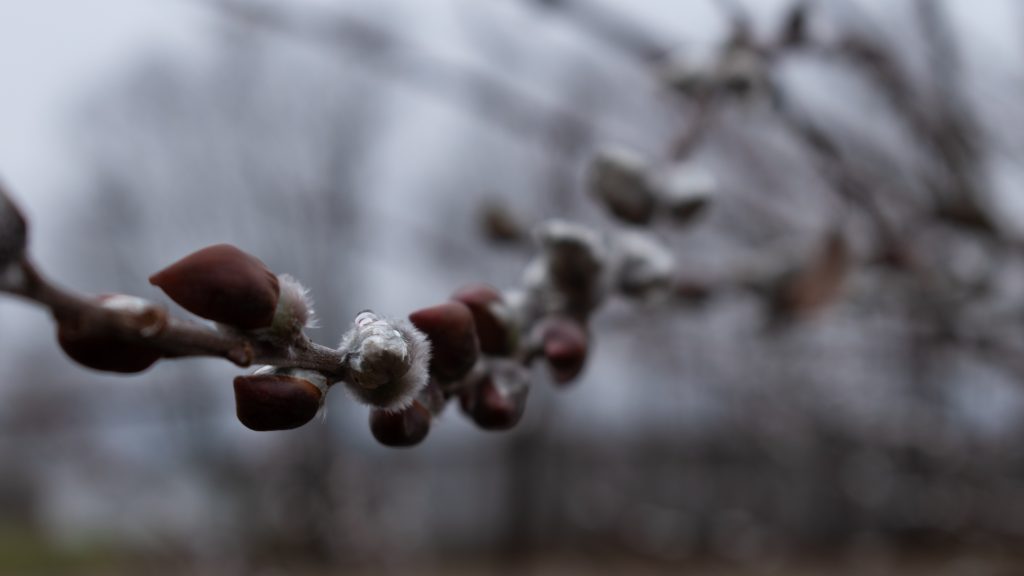Willow trees belong to the genus of salix, which typically grows near the water and moist soil. They take a lot of water to thrive well due to their strong roots. About more than 400 types of willow trees were identified.
The common of them are native to Europe. Most willow trees inhabit the temperate climate, however, several species survive in the tropical area.
Some willow trees are cultivated in the garden because of their appearance, however, people have to pay attention to their roots when planting them near the building. Their strong roots grow widely which breaks the underground lines.
Table of Contents
White willow (Salix alba)
As the name, the underneath color of its leaves is silver-white while the top is green and covered the downy hairs. This type of willow tree has trailing branches and narrow leaves. White willow is recognized as one of the largest willow trees which reaches over 80 feet in height.
Peach-leaf willow (Salix amygdaloides)
As the name implied, the leave of a peach-leaf willow tree is similar to the leaves of a peach tree. It commonly occurs in the grassland of North America.
This type of willow tree has green lanceolate leaves that their underside is pale whitish, and small to medium size of trunk that reaches about 13 to 66 feet or 4 to 20 meters in height.
Pacific willow (Salix Lucida)
Pacific willow generally can be found in the wetland of northern and western North America. It is also called whiplash willow due to its curved tip of leaves.
The tree is small that reaches around 13 to 36 feet or 4 to 11 meters in height. Pacific willow has bright green lanceolate leaves, dark bark, and yellow catkins.
Weeping willow (Salix babylonica)

The name of weeping willow comes from its dropping branches. This type has trailing branches and narrow elongated leaves that reaching down to the ground.
The dropping branches and leaves look like a cascading that appears elegant and beautiful. Color of leaves is yellowish to brown, while changed to the golden yellow in the fall.
The weeping willow is known as one of the fast-growing willow trees, it has strong and wide roots. Therefore you have to take more space of planting weeping willow tree from the underneath lines, included pipeline and others.
The weeping willow tree is origin to china, commonly inhabits the moist area were close to the streams, rivers, lake and other water sources.
The tree is large which reaches about 20 to 25 m or 62 to 82 feet. The weeping willow is recognized to some types. Each type of weeping willow has different characteristics.
Weeping golden willow (salix x sepulcralis “chrysocoma”)
Weeping golden willow is the result type of crossing over the Salix babylonica and Salix alba. It is called weeping golden willow because of its yellow-green color of the leave when young.
The appearance close to its parental characteristics, salix Babylon which looks glossy green color. Tree reaches 22 m or 72 feet in height.
White weeping willow (Salix alba “tristis”)
Most people consider that white weeping willow and weeping golden willow are the same, however, both are different.
The white weeping willow tree is bigger than weeping golden willow trees. The tree is about 15 to 21 meters or 50 to 70 feet in height.
The foliage is narrow oval shape tapering which changed from bright green to the dark and the last to the yellow gold. This type of weeping willow has dropping branches and sturdy trunk. It naturally thrives around the water source, including rivers, lakes, streams, and ponds.
Wisconsin weeping willow (salix x blanda and salix x pendulina)
Wisconsin weeping willow commonly can be found in North America. The tree is sturdy and short, about 6 to 12 meters or 20 to 40 feet in height.
As the general weeping willow, the branch’s color is yellowish to brown. This type has narrow oval shape tapering leaves and downy, hanging flowering spike of the tree.
Bebb willow (salix bebbiana)
Bebb willow is a small willow tree that reaches 10 to 30 feet or 3 to 9 meters in height. It is originally from North America and commonly thrives in the wetlands.
Unlike most willow trees, this willow is tolerant of the drought. Bebb willow is also called gray willow, long-beaked willow, beaked willow, and red willow.
Pussy willow (Salix discolor)

Unlikely the common willow tree, pussy willow tolerate the low moisture soil and take a lot of sunlight. It thrives in the varying condition of the soil, both the high and poor the water source. It is native to North America were from USDA zone 4 to 8.
Pussy willow is a downy flowering tree that has small trunks and breaches which some of them grow out from the ground. The trunk is about 25 feet in height.
Scouler’s willow (Salix scouleriana)
Scouler’s willow is also called fire willow, which naturally thrives in temperate zones where are low of moisture.
The trunk is small, about 6.5 to 22 feet or 2 to 7 meters in height, however part of a tree grow taller than usual Schouler’s willow. This willow tree has dark brown bark and lanceolate leaves that have toothed edged.
Crack willow (Salix matsudana)
Crack willow is also called curly willow trees due to its curly branches. This type of willow tree is a fast-growing tree and a short to medium willow tree which reaches about 10 to 30 feet in height and 15 feet in width.
Crack willow has twisted branches and leaves which reach down to the ground. The foliage appears interesting and beautiful with bright yellow-golden, therefore it is commonly planted as an ornamental plant in the yard or garden.
Black willow (Salix nigra)
The name of black willow comes from the striking, thick, and scaly black bark of its trunk. The foliage is slender which reaching down to the ground with green colored on the top and lighter underneath. This type of willow tree is larger, over 40 feet in width and about 50 feet in height.
Black willow is a tree of temperate climate and it usually grows near the water where it is high moisture, included edge lakes, rivers, streams, and others.
Goat willow (Salix caprea)
Goat willows is a small tree or large shrub which has interesting puffy catkins. It is native to western, central Asia and Europe. The tree requires full of sunlight and grows about 12 to 25 feet in height.
Purple osier willow (Salix purpurea)
The mane of purple osier willow comes from its purple stems. This willow is native to western Asia, North Africa, and Europe. It has blue-green colored leaves and beautiful flowers.
Purple osier willow is effective to control the erosion of streams and lakes. Also called basket willow, Alaska blue willow, purple willow, and blue arctic willow. The height of the tree reaches 8 to 10 feet.
Corkscrew willow (salix matsudana “tortusa”)
Corkscrew willow is origin to northeastern China, and also called globe willow, Pekin willow, and twisted willow. The name comes from the twist in spiral branches.
This willow is a large tree that grows about 6 to 12 meters (20 to 40 feet) in height. Corkscrew willow is popular as an ornamental tree in many parts of the world because of its crooked stems.
Dappled willow (salix intergra “hakuro-nishiki”)
The dappled willow is classified as a shrub or small tree which grows about 6.5 to 20 feet or 2 to 6 meters in height. it has narrow elongated green leaves which their tips can be white or pink.
This type of willow is also called tricolor willow due to its leaves colors, Nishiki willow, and Japanese variegated willow.
Narrowleaf willow (Salix exigua)
Narrowleaf willow is also known as coyote willow or sandbar willow, which thrives throughout North America. as the name suggests, this type of willow has narrow elongated leaves. it is a shrub that grows around 4 or 7 m or 13 to 23 feet. the flowers in catkins that appear when the spring begins.
Yellow willow (Salix lutea)
Yellow willow is a fast-growing shrub that generally grows in the wetlands of North America. it inhabits the area where near water, included edge of rivers, streams, lake, and others.
This willow has reddish stems, narrow oval shape green leaves that reach about 11 cm in length, and strong roots system which used to control the erosion soil.
 Natgeos Green and Vibrant
Natgeos Green and Vibrant


